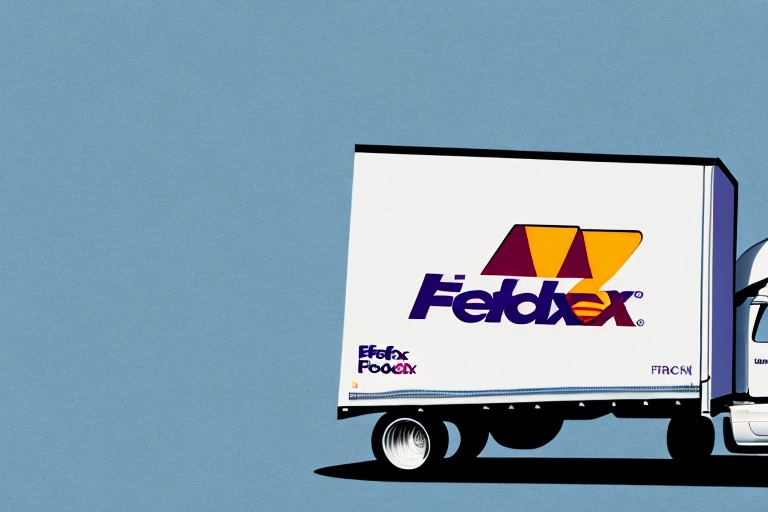Shipping Frozen Food with FedEx: Comprehensive Guide for Optimal Results
Shipping frozen food requires careful planning and execution to ensure that products arrive safely and maintain their quality. FedEx offers reliable services tailored for perishable and temperature-sensitive shipments. This guide provides an in-depth analysis of shipping frozen food with FedEx, incorporating the latest best practices, data-driven insights, and reputable sources to help you make informed decisions.
Why Choose FedEx for Shipping Frozen Food
Advanced Tracking Systems
FedEx provides an advanced tracking system that offers real-time updates and notifications. This ensures you can monitor your shipment's progress and take immediate action if any issues arise, enhancing the reliability of your frozen food deliveries.
Specialized Packaging Options
FedEx offers a variety of specialized packaging solutions designed specifically for frozen food. These include insulated containers, dry ice, and gel packs that help maintain the required temperatures throughout transit. According to FedEx's Food Industry Solutions, these packaging options are tested to ensure optimal performance under various shipping conditions.
Extensive Delivery Network
With over 220 countries and territories served, FedEx's extensive network ensures that your frozen food shipments reach even the most remote locations efficiently. Their broad reach minimizes transit times, which is crucial for maintaining the integrity of frozen products.
Regulatory Compliance for Shipping Frozen Food
Labeling Requirements
Proper labeling is essential for compliance and safety. Packages must be clearly marked as "Perishable" and "Keep Frozen" to inform handlers of the temperature-sensitive nature of the contents. Additionally, include any necessary health and safety labels as mandated by regulatory bodies.
Packaging Standards
Adhering to packaging standards ensures that your frozen food remains intact during transit. According to the FDA, packaging must prevent contamination and maintain the required temperature to preserve food quality.
State and International Regulations
Shipping frozen food across state or international borders involves navigating various regulations. Each region may have specific import/export requirements, including documentation and permissible food items. Consulting FedEx's international shipping guidelines can help ensure compliance.
Effective Packaging Techniques for Frozen Food
Insulated Packaging Materials
Using high-quality insulated materials is critical for maintaining the temperature of frozen food. Materials such as expanded polystyrene (EPS) foam or insulated liners help protect against temperature fluctuations during transit.
Proper Labeling and Documentation
In addition to external labels, including packing slips and handling instructions inside the package can provide essential information to handlers, ensuring that the shipment is managed correctly throughout its journey.
Selecting the Right Container Type
Choosing the appropriate container depends on the type of frozen food, the duration of transit, and the distance covered. Options include:
- Insulated Boxes: Ideal for short to medium distances.
- Dry Ice Containers: Suitable for long-distance shipments requiring ultra-low temperatures.
- Gel Pack Containers: Reusable and environmentally friendly, best for shorter transit times.
Maintaining the Cold Chain During Transit
Choosing the Appropriate Cooling Agents
Effective cooling agents are vital for preserving frozen food during shipping. Dry ice and schedule pickups online or via phone, offering flexibility to accommodate your shipping schedule. Providing detailed shipment information during scheduling ensures accurate processing and handling.
Shipment Tracking Tools
Utilize FedEx's shipment tracking tools to stay informed about your package's status. These tools offer insights into transit progress, estimated delivery times, and any potential delays.
Delivery Options and Customization
FedEx offers customizable delivery options, such as signature confirmation and hold at location, allowing recipients to manage the receipt of their frozen food shipments according to their preferences and schedules.
Cost Considerations and Comparisons
FedEx Pricing for Frozen Shipments
FedEx's pricing for shipping frozen food varies based on factors like weight, size, destination, and chosen shipping speed. Their rate calculator can help estimate costs accurately.
Comparing Costs with Other Carriers
When comparing FedEx with other carriers such as UPS or DHL, consider not only the base shipping rates but also factors like delivery reliability, specialized packaging options, and temperature control capabilities. According to a Forbes analysis, FedEx remains competitive due to its robust infrastructure and specialized services for perishable shipments.
Customer Experiences and Feedback
Positive Reviews
Many customers praise FedEx for its timely deliveries, reliable tracking system, and effective temperature control solutions. Testimonials highlight the company's commitment to maintaining the quality of frozen food shipments.
Common Issues and Resolutions
Some customers have reported challenges such as delays during peak seasons or handling errors. However, FedEx's responsive customer service often resolves these issues promptly, ensuring customer satisfaction.
Best Practices for Shipping Frozen Food with FedEx
- Plan Ahead: Schedule shipments in advance to account for transit times and potential delays.
- Use Proper Insulation: Select appropriate insulated packaging materials to maintain the required temperatures.
- Label Clearly: Ensure all packages are clearly labeled with handling instructions and perishability warnings.
- Choose the Right Shipping Option: Select a shipping speed that aligns with the perishability of the food and the distance it needs to travel.
- Monitor Shipments: Utilize tracking and temperature monitoring tools to keep an eye on your shipment's status.
Conclusion
Shipping frozen food with FedEx is a dependable option when you utilize the company's specialized services, adhere to regulatory guidelines, and implement best packaging and handling practices. By leveraging FedEx's advanced tracking systems, extensive delivery network, and tailored packaging solutions, you can ensure that your frozen food shipments arrive safely and maintain their quality.




















